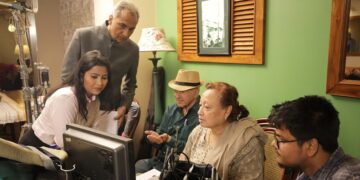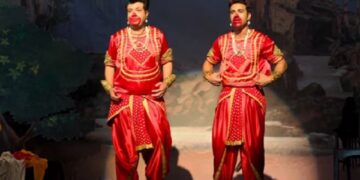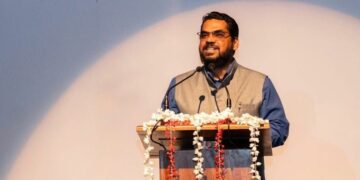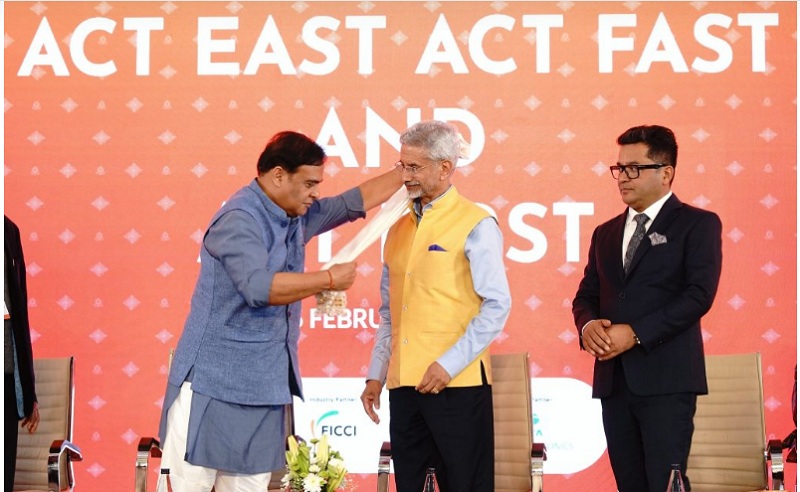By Abantee Dutta
The issue of so-called “illegal migration” in Assam must be situated within a layered historical, political and socio-economic context. Assam, located in India’s northeast, shares a porous border with Bangladesh. This has shaped migration patterns for centuries, from long before the 1971 creation of Bangladesh.
Population movements into Assam predate colonial British rule, and were facilitated by riverine routes and agrarian expansion, but intensified owing to British policies encouraging migration from present-day Bangladesh to cultivate crops such as rice and jute in Assam’s plains.
Post-independence and Partition, migration has become a contentious political issue, especially as demographic shifts coincided with ethnic anxieties and demands for cultural and linguistic preservation among Assamese communities. These tensions crystallised during the 1979-1985 Assam Agitation, which mobilised around the detection, deletion and deportation of “foreigners” seen as threats to land, employment and political representation. The Assam Accord of 1985 institutionalised these concerns by setting 24 March 1971 as the legal cut-off date for identifying “foreign nationals” in Assam.
Since then, questions of citizenship and migration have remained politically charged. Policies such as the updating of the National Register of Citizens (NRC) in 2019 attempted to verify citizenship but left millions in precarious legal positions, further fuelling uncertainty.
The discourse around “illegal migration” is closely tied to communal and ethnic politics, as debates often disproportionately implicate Bengali-origin Muslims, though many have deep-rooted histories in Assam. The issue is further complicated by the social realities of Assam’s border districts, where porous boundaries, recurring floods and cycles of displacement blur distinctions between citizen and migrant. While state institutions stress law-and-order and security dimensions, humanitarian perspectives highlight the vulnerabilities faced by displaced populations caught between competing nationalisms, resource pressures and administrative procedures.
In Assam, the migration question is not merely about legality but intersects with broader themes of identity politics, state formation, resource distribution and human rights. It reveals tensions between nation-building projects and the lived realities of borderland populations, making it a site where questions of sovereignty, belonging and exclusion continue to be negotiated.
In recent times, these debates have acquired an added dimension. On 28 May 2025, in a bid for “self-protection,” the Government of Assam authorised the distribution of arms licences to “indigenous” communities at a state cabinet meeting that approved a special scheme to provide licences to “original inhabitants and indigenous Indian citizens” residing in remote and vulnerable areas, especially those along the Bangladesh border and in districts with sizeable Muslim-majority populations.
The policy aims to empower indigenous residents in districts such as Dhubri, Morigaon, Barpeta, Nagaon and South Salmara–Mankachar. Subsequently, on 14 August 2025, a dedicated online portal was launched to streamline the process, allowing indigenous residents in these areas to apply for arms licences digitally.
The Salwa Judum case
In this context, the Supreme Court’s landmark judgment in Nandini Sundar & Ors. v. State of Chhattisgarh (2011) offers an unambiguous lesson: arming vulnerable communities to fight internal conflicts is unconstitutional and unjust. In that case, the State of Chhattisgarh recruited tribal youth as Special Police Officers under the vigilante movement known as Salwa Judum.
The Court emphasised that such practices violated the right to equality and dignity under Articles 14 and 21 of the Constitution. Outsourcing security functions to impoverished groups, it held, exposed them to grave harm while allowing the State to abdicate its obligation to maintain law and order through professional and accountable forces. Rather than offering protection, this approach turned vulnerable citizens into expendable instruments of violence in a conflict they neither initiated nor controlled.
At the heart of Assam’s arms-licensing policy lies the ambiguity and exclusionary potential of the category “indigenous.” In contemporary Assam, this designation often operates as a proxy for non-Muslim Assamese populations, despite the longstanding presence of indigenous Muslim groups such as the deshis, goriyas and moriyas, who were recognized as indigenous by the Assam government in 2022.
The policy therefore reaffirms boundaries of belonging by privileging some communities for protection while erasing others from state concern. Such framing is not constitutionally neutral and undermines commitments to equality, reinforcing exclusion under the guise of empowerment. By selectively granting weapons to communities under the contested label of “indigenous,” the State both displaces its responsibilities and institutionalises new forms of precarity and communal vulnerability.
Some have sought to analogise this policy with the doctrine of levée en masse in international humanitarian law, which permits the spontaneous arming of civilians in unoccupied territory in the face of imminent “external invasion.” This analogy, however, is flawed. Levée en masse is, by definition, temporary, exceptional and tied to national survival against a foreign aggressor under the Hague Regulations, 1907; Additional Protocol I, 1977.
It has no application to domestic disturbances, insurgency or migration-related tensions. Extending this doctrine to internal conflicts would distort international law and dangerously normalise the militarisation of civilian populations. Unlike levée en masse, Assam’s predicament involves irregular migration and inter-community tensions that must be addressed through lawful deportation processes, political dialogue and accountable border governance – not through the militarisation of identity categories.
The underlying realities
The policy and discursive turn towards arming populations under the contested label “indigenous” echoes Joseph Conrad’s Heart of Darkness. Conrad exposed how violence is often masked by rhetoric of civilising missions and protective necessity. His text warned that the language of order and security can conceal, and enable, deeper currents of darkness—an unravelling of humanity, where violence is normalised and moral limits suspended.
In Assam, the State’s discourse of “self-protection” obscures the structural realities at play: the militarisation of identity categories, the fracturing of fragile social fabrics, and the displacement of constitutional responsibilities under the guise of state sanction.
The policy to arm so-called “indigenous” groups in Assam underlines a paradox in which the State arms the populace but withholds participation. Political participation, in its democratic sense, requires the capacity to deliberate, dissent and shape governance. Arming, by contrast, is not an invitation to agency but a displacement of it. It transforms citizens into extensions of state power without granting them access to decision-making or recognition as equal participants.
The experience of Salwa Judum, struck down in Nandini Sundar vs State of Chhattisgarh, makes this clear. The tribal youth recruited as Special Police Officers were not empowered to shape security policy or negotiate peace; they were made instruments of violence, exposed to both state and insurgent retaliation. Their “participation” was coercive, not political. Assam’s current policy risks repeating this logic by offering arms in the name of protection while shutting out avenues for representation, dialogue and redress.
These perspectives suggest that the State’s duty lies not in arming citizens but in protecting them through accountable institutions. Just as the court in Nandini Sundar found that policing could not be outsourced to armed civilians, Assam too must resist arming populations under the contested label “indigenous” to deal with migration. To do so would violate constitutional guarantees and risk fuelling communal violence, as the 2012 Bodo–Muslim clashes tragically showed, killing more than 100 people and displacing 400,000.
Both Chhattisgarh and Assam highlight a common principle: the State’s duty is to protect vulnerable communities, not arm them. In Chhattisgarh, this meant dismantling Salwa Judum. In Assam, it must mean rejecting calls to militarise populations and instead addressing the structural drivers of migration-related tensions.
Abantee Dutta is a Ph.D student at the Carter School of Peace and Conflict Resolution, George Mason University. She holds a Masters degree in law from the University of Melbourne and is the co-founder of Studio Nilima: Collaborative Network for Research and Capacity Building in Guwahati.
Originally published under Creative Commons by 360info™.















